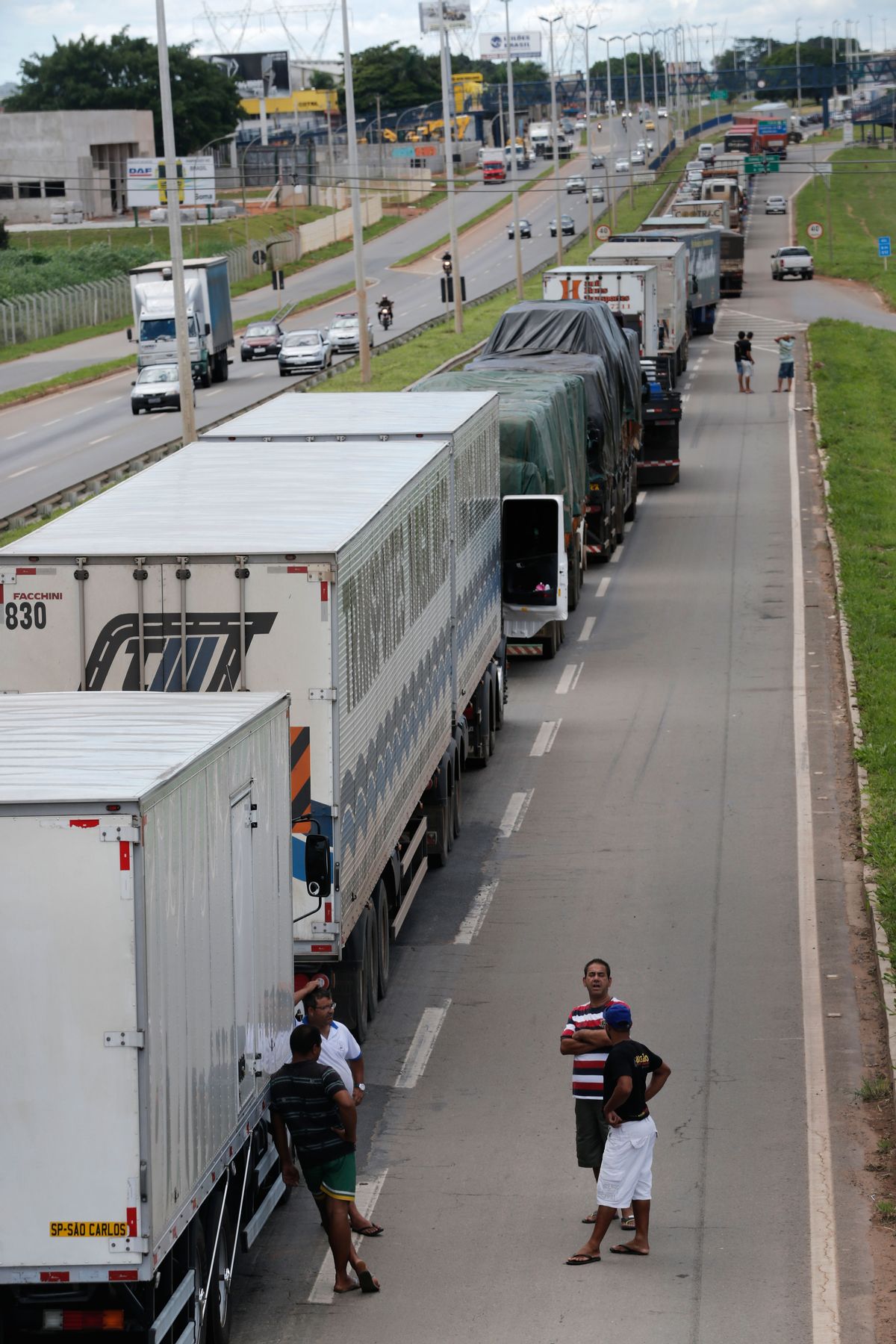This post originally appeared on Capital and Main.
Last week the National Council on Occupational Safety and Health, a federation with 21 affiliates in 15 states, observed Workers’ Memorial Week, a tribute to workers who have died on the job, by releasing a 27-page report about employer practices that put wage-earners at risk. The council dubbed the companies with the worst records the “Dirty Dozen 2017.” Of the 12 employers, three have California headquarters.
The group collected data for the Dirty Dozen from its affiliates’ network, as well as from community and labor allies, said Jessica Martinez, NCOSH’s co-executive director, on a call to Capital & Main. The criteria included injury severity, state and federal authorities’ sanctions and workers’ activities to improve their job conditions.
There were 745 deaths among heavy truck and tractor-trailer drivers nationwide in 2015, the highest number of all occupations, according to the U.S. Department of Labor. The California worker deaths cited in the report all involved motor vehicles.
William Vasquez, a 26-year-old truck driver for Long Beach-based California Multimodal LLC, which is part of the California Cartage group of companies, died when his trailer ran him over, spurring an investigation by the state Occupational Safety and Health Administration. (The case is now closed, with no civil or criminal charges filed, Lucas Brown, a spokesman for Cal/OSHA, told Capital & Main.)
Vasquez had earned his living as an independent contractor. “Characterizing workers as non-employees has serious negative consequences for them,” reported the National Employment Law Project in 2015. “Non-employees have no statutory right to minimum wage, overtime pay, compensation for injuries sustained on the job, unemployment insurance if involuntarily separated from employment, or protection against discrimination.”
In another case, four migrant female farmworkers, ages 16 to 48, perished in a crash of their van in Central California. As a result of this fatal accident, the federal Labor Department sued two employers involved in negligent transportation practices: Valley Garlic, Inc., a packer and processor; and X-Treme AG Kerman, a farmworker contractor that Valley Garlic used to transport workers.
Later, a federal judge prohibited X-Treme from driving farmworkers. However, the court did not bar Valley Garlic from such activity.
The five deceased workers referenced above were among California’s 388 workplace deaths in 2015, according to the Labor Department. Nationally, there were 4,836 fatal occupational injuries in 2015 compared with 4,821 for 2014.
Jordan Barab, a former deputy assistant secretary for the Occupational Safety and Health Administration at the Labor Department, told Capital & Main that the current “great debate” in Washington, DC over improving worker safety gets down to pitting standards and strong enforcement against better cooperation and compliance.
“The safety conditions in the Dirty Dozen show we need more enforcement of our safety laws, not less,” said Barab. He described proposed federal OSHA budget cuts under the Trump administration as “penny-wise and pound-foolish” for workers, their families and taxpayers.
The OSHA budget for 2016 was $552.8 million, with a proposed 21 percent cut of $116 million for fiscal year 2018, according to NCOSH.
In a phone interview, Everlyn Cage, a former Mississippi employee of Nissan USA, alleged employer intimidation over reporting on-the-job injuries. She claimed the company regularly threatened workers about losing their jobs if they reported injuries that could keep them off the job over a year.
Injured Nissan workers who stayed out over a year lost their jobs, according to Cage, spurring a climate of fear throughout the plant. Nissan fired Cage, she said, in 2013 after multiple back injuries led a doctor to refuse her return to work.
Parul Bajaj, a company spokesman, told Capital & Main via email: “Nissan does not comment on personnel actions at any of its facilities. The safety and well-being of our employees is always our top priority. We dedicate extensive time and resources to plant safety programs and training, and our lost time rates (a recognized measure of plant safety) are substantially better than the industry average.”
The NCOSH report casts a wide net of policy recommendations for improving worker safety and health, including a proposal that employers provide more comprehensive illness and injury prevention programs that exceed current federal OSHA standards. Another recommendation is to preserve and expand workplace safety programs.
In addition, NCOSH calls for employers to allow workers to form labor unions.
The union membership rate of 10.7 percent in 2016 is a steep drop from a rate of 20.1 percent in 1983, according to the federal Bureau of Labor Statistics. Non-union workers, e.g., contract, day, migrant and temporary workers, risk getting fired without “just cause.”
“Temporary workers rarely get training and are assigned to the most dangerous jobs,” Dave DeSario, the head of the Alliance for the American Temporary Workforce, and executive producer of A Day’s Work, a documentary film, told Capital & Main via phone.



Shares